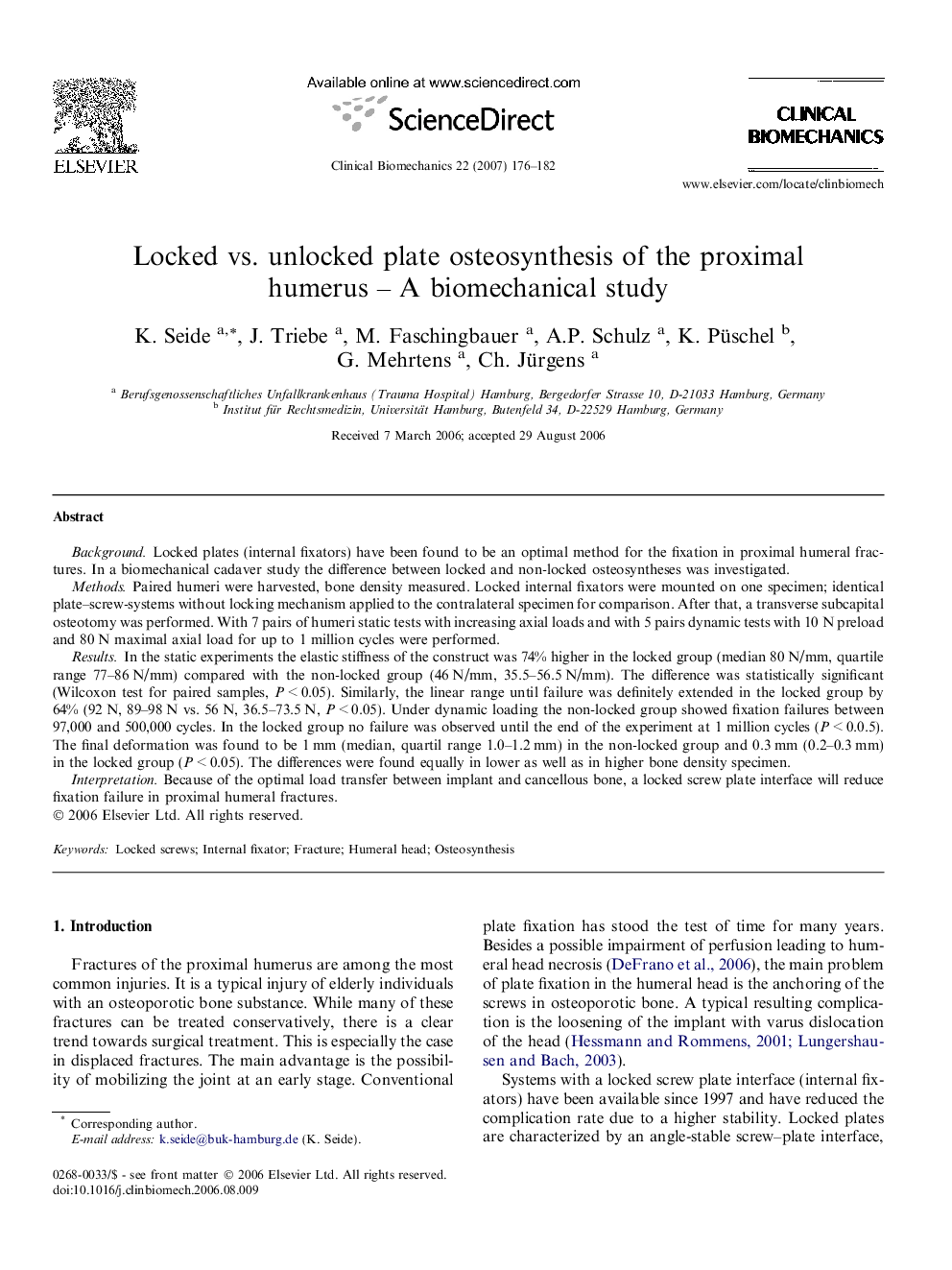| Article ID | Journal | Published Year | Pages | File Type |
|---|---|---|---|---|
| 4051315 | Clinical Biomechanics | 2007 | 7 Pages |
BackgroundLocked plates (internal fixators) have been found to be an optimal method for the fixation in proximal humeral fractures. In a biomechanical cadaver study the difference between locked and non-locked osteosyntheses was investigated.MethodsPaired humeri were harvested, bone density measured. Locked internal fixators were mounted on one specimen; identical plate–screw-systems without locking mechanism applied to the contralateral specimen for comparison. After that, a transverse subcapital osteotomy was performed. With 7 pairs of humeri static tests with increasing axial loads and with 5 pairs dynamic tests with 10 N preload and 80 N maximal axial load for up to 1 million cycles were performed.ResultsIn the static experiments the elastic stiffness of the construct was 74% higher in the locked group (median 80 N/mm, quartile range 77–86 N/mm) compared with the non-locked group (46 N/mm, 35.5–56.5 N/mm). The difference was statistically significant (Wilcoxon test for paired samples, P < 0.05). Similarly, the linear range until failure was definitely extended in the locked group by 64% (92 N, 89–98 N vs. 56 N, 36.5–73.5 N, P < 0.05). Under dynamic loading the non-locked group showed fixation failures between 97,000 and 500,000 cycles. In the locked group no failure was observed until the end of the experiment at 1 million cycles (P < 0.0.5). The final deformation was found to be 1 mm (median, quartil range 1.0–1.2 mm) in the non-locked group and 0.3 mm (0.2–0.3 mm) in the locked group (P < 0.05). The differences were found equally in lower as well as in higher bone density specimen.InterpretationBecause of the optimal load transfer between implant and cancellous bone, a locked screw plate interface will reduce fixation failure in proximal humeral fractures.
